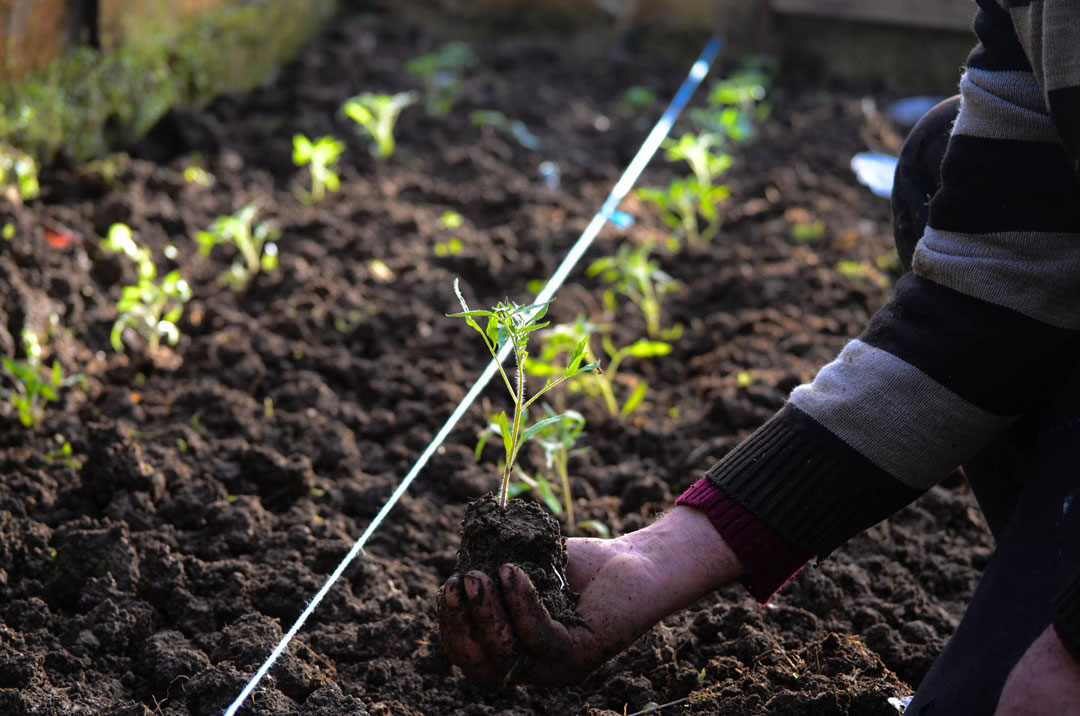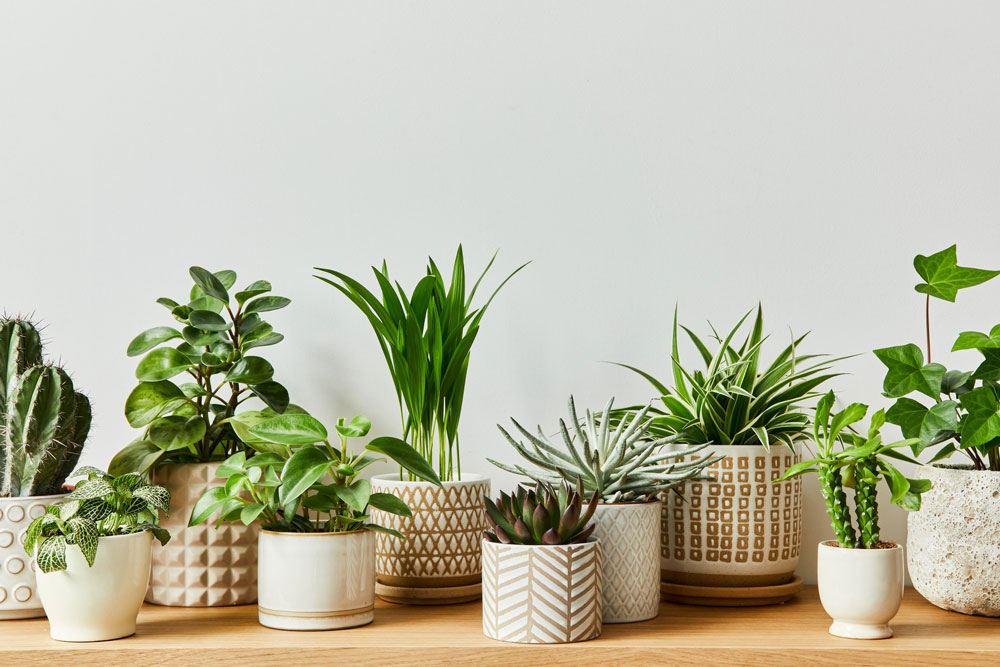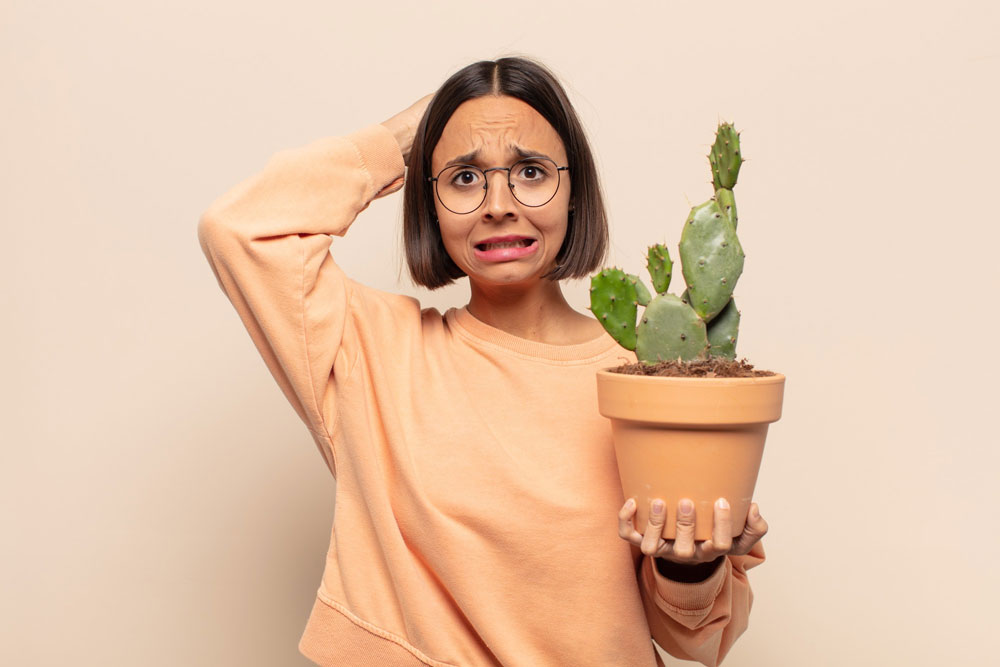
Indoor planting is a wonderful way to bring the beauty of nature into your home, regardless of the season. Indoor planting offers a rewarding experience that can be enjoyed by everyone even if you are just starting. You can enjoy the benefits of fresh greenery and vibrant blooms throughout the year. In this article, we will explore the basics of indoor planting, including its benefits, selecting the right plants, essential tools, and supplies, as well as early sowing techniques to give your plants a head start in spring.
Read Starting Vegetable Seedlings Indoors - Spring
Benefits of Indoor Planting

Indoor planting offers numerous benefits that go beyond just aesthetic appeal. Not only do indoor plants add a touch of beauty to your living space, but they also improve indoor air quality by filtering out pollutants and releasing oxygen. They create a soothing and relaxing environment, reducing stress levels and enhancing overall well-being. Indoor plants can also boost productivity and concentration, making them the perfect addition to your home office or study area. Additionally, they can help regulate humidity levels and act as natural humidifiers, especially during dry winter months. With these benefits in mind, it's no wonder that indoor planting has become increasingly popular among gardening enthusiasts.
Choosing the Right Plants for Indoor Planting
When it comes to indoor planting, selecting the right plants is crucial for their growth and overall success. Not all plants thrive indoors, so it's important to consider factors such as lighting conditions, temperature, and available space.
Some popular choices for indoor plants include
- Succulents: Known for their low maintenance and ability to tolerate dry conditions.
- Ferns: a great option, as they thrive in humidity and low light environments.
- African violets or orchids: If you're looking for a pop of color, these add vibrancy to any room.
- Snake plant: Absorbs toxins and releases oxygen at night, improving indoor air quality.
- Peace lily: Removes mold spores, ammonia, benzene, and trichloroethylene from the air.
- Aloe vera: Soothes skin and reduces inflammation when applied topically.
- English ivy: Removes airborne fecal-matter particles and is easy to grow.
- Chinese evergreen: Easy to care for and filters out chemicals like formaldehyde.
- Spider plant: Removes carbon monoxide and xylene from indoor air.
- Pothos: Traps pollutants like formaldehyde and benzene and is very low maintenance.
Before choosing your plants, it's important to research their specific care requirements to ensure they will thrive in your indoor environment.
Read 24 BEST INDOOR PLANTS FOR ANY LOCATION
Essential Tools and Supplies for Indoor Planting
To get started with indoor planting, there are a few essential tools and supplies that you'll need to have on hand. First and foremost, you'll need a selection of pots or containers for your plants. Choose pots that have drainage holes to prevent waterlogging, and ensure they are the appropriate size for your plants' root systems. A good potting mix is also essential, as it provides the necessary nutrients and drainage for healthy plant growth. Other important tools include a watering can or spray bottle for watering, a pair of gardening gloves to protect your hands, and a set of pruners or scissors for trimming and maintaining your plants. Additionally, investing in a good quality indoor plant fertilizer will help nourish your plants and promote their growth.
Preparing Your Indoor Planting Space
First things first. Before you start planting, it's important to prepare your indoor space to create an optimal environment for your plants. Begin by selecting a suitable location with adequate natural or artificial light. Most indoor plants require bright, indirect light to thrive, so choose a spot near a window or provide supplemental lighting if necessary. Clean the area thoroughly to remove dust and debris that can hinder plant growth. If you're placing your plants on a windowsill, ensure there are no drafts or extreme temperature fluctuations that could negatively impact your plants. Finally, consider the humidity levels in your home and provide a humidifier or pebble tray to create a comfortable environment for your plants, especially if you live in a dry climate.
Early Sowing Techniques for Indoor Planting
One of the advantages of indoor planting is the ability to start sowing seeds early, giving your plants a head start on spring. To begin, select seeds that are suitable for indoor sowing and follow the specific instructions on the seed packet. Start by filling small seed trays or pots with a seed starting mix, which is lighter and provides better drainage than regular potting soil. Moisten the mix before sowing the seeds, ensuring they are spaced evenly and covered lightly with a thin layer of soil. Place the trays or pots in a warm location, ideally between 70-75°F (21-24°C), and cover them with a plastic dome or plastic wrap to create a greenhouse effect. Regularly check the moisture levels and provide water as needed, making sure not to overwater. As the seedlings emerge, remove the cover and gradually acclimate them to ambient light and temperature conditions.
Common Mistakes to Avoid in Indoor Planting

There are some common mistakes that beginners should avoid. Overwatering is one of the most common pitfalls, as it can lead to root rot and other fungal diseases. It's important to water your plants only when the top inch of soil feels dry to the touch. Another mistake is placing plants in areas with insufficient light, which can result in leggy growth and weak plants. Remember to research the lighting requirements of each plant and provide the appropriate conditions. Using the wrong type of soil or inadequate drainage can also be detrimental to your plants' health. Ensure you are using a well-draining potting mix and select pots with drainage holes to prevent waterlogging.
Caring for Indoor Plants
Proper care is essential for the health and longevity of your indoor plants. Regular watering is important, but it's equally important to avoid overwatering. The frequency of watering will depend on the specific plant and its moisture requirements, so it's a good idea to research the needs of each plant in your collection. Fertilizing your plants is also crucial to provide them with the necessary nutrients for growth. Choose a balanced indoor plant fertilizer and follow the instructions on the packaging for application rates. Additionally, regular pruning and grooming will help maintain the shape and appearance of your plants. Remove any dead or yellowing leaves, and trim back any leggy growth to encourage bushier growth.
Troubleshooting Common Indoor Planting Issues
Even with proper care, indoor plants can sometimes encounter problems. One common issue is pests, such as spider mites, aphids, or mealybugs. Regularly inspect your plants for signs of infestation, such as webbing, sticky residue, or distorted leaves. If pests are detected, treat the affected plants with an appropriate insecticidal soap or neem oil, following the instructions carefully. Another problem that indoor plants may face is nutrient deficiency. Yellowing leaves, slow growth, and poor flowering can be signs of nutrient deficiencies. Applying a balanced fertilizer according to the plant's needs can help address this issue. Finally, keep an eye out for diseases such as powdery mildew or fungal infections. Proper air circulation, avoiding overwatering, and maintaining good hygiene practices can help prevent these issues.
Resources for Further Indoor Planting Guidance
If you're looking for more guidance and information on indoor planting, there are several resources available to help you along your journey. Online gardening websites provide a wealth of information on various gardening topics, including indoor planting. Websites dedicated to gardening tips and plant care can offer valuable insights and expert advice. Additionally, gardening forums or online communities allow you to connect with fellow gardening enthusiasts who can share their experiences and offer guidance. Books and magazines focused on indoor gardening are also great resources for in-depth knowledge and inspiration. Don't hesitate to explore these resources to expand your indoor planting knowledge and enhance your gardening skills.
Before we finish
Indoor planting is a rewarding and enjoyable activity that allows you to bring the beauty of nature into your home. Remember to start early with sowing techniques to give your plants a head start on spring, and be mindful of common mistakes to avoid. With the right tools, preparation, and knowledge, you can embark on a successful indoor planting journey and enjoy the beauty and tranquility of nature right at home.
Ready to get started with indoor planting? Visit our gardening website for more tips and guidance on creating your own indoor garden oasis. Happy planting!

